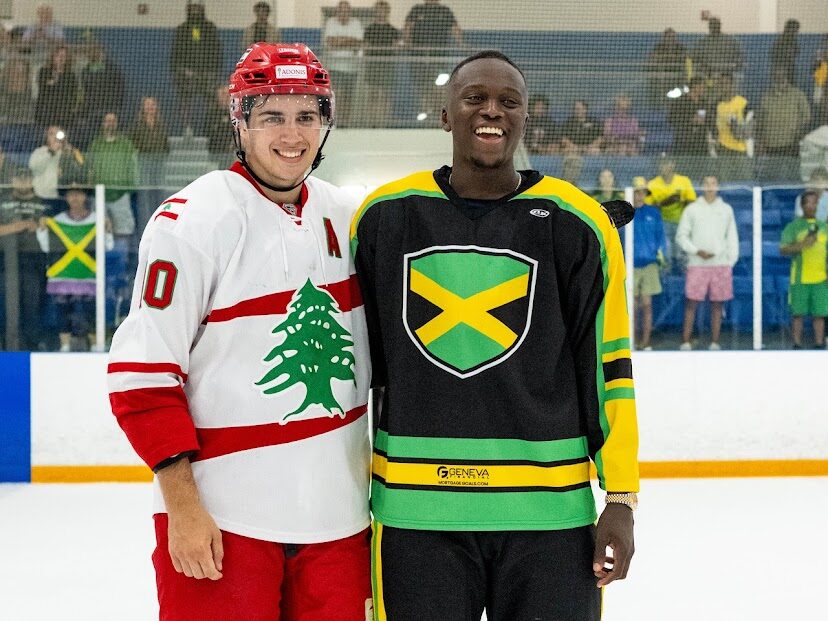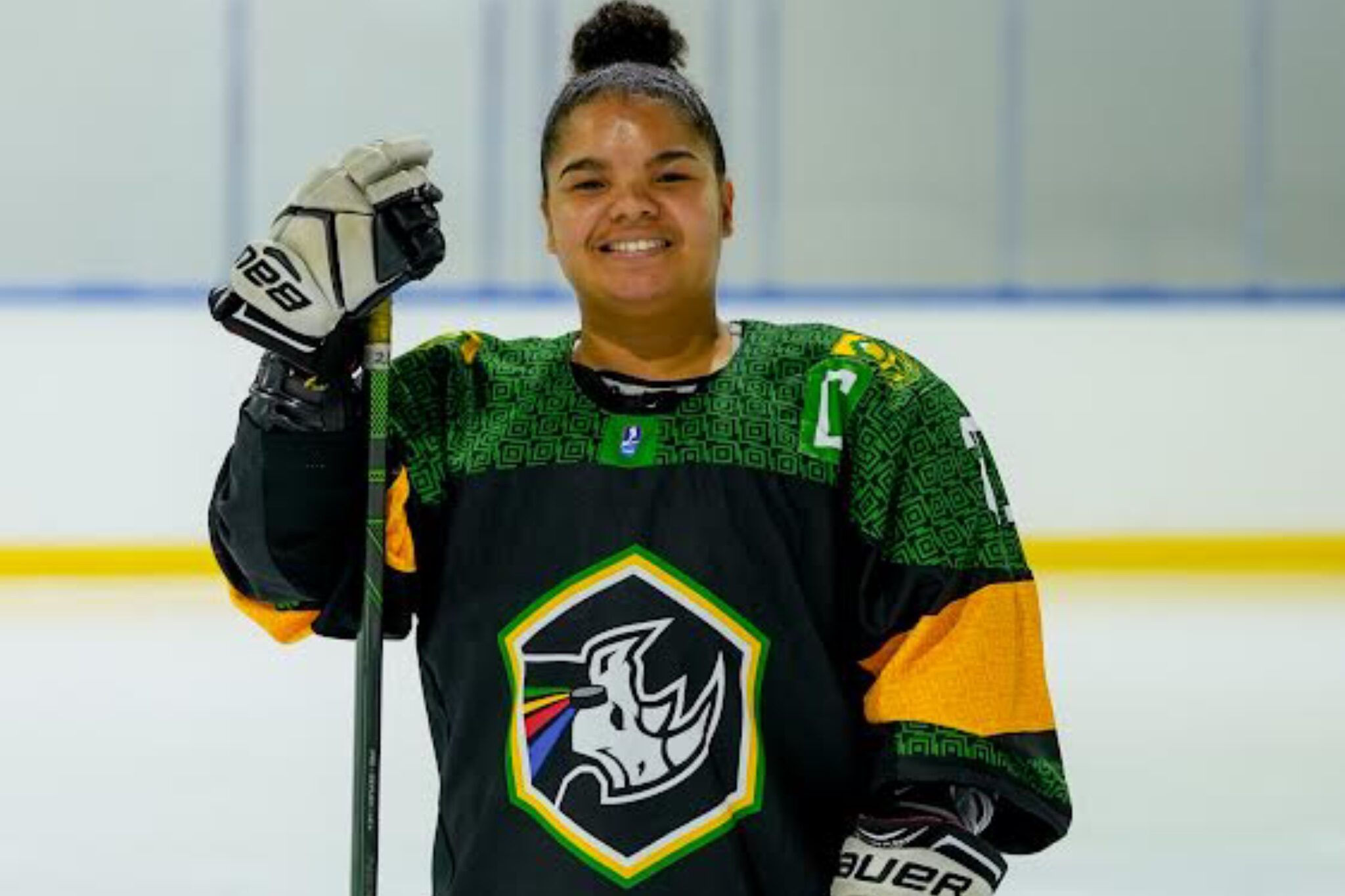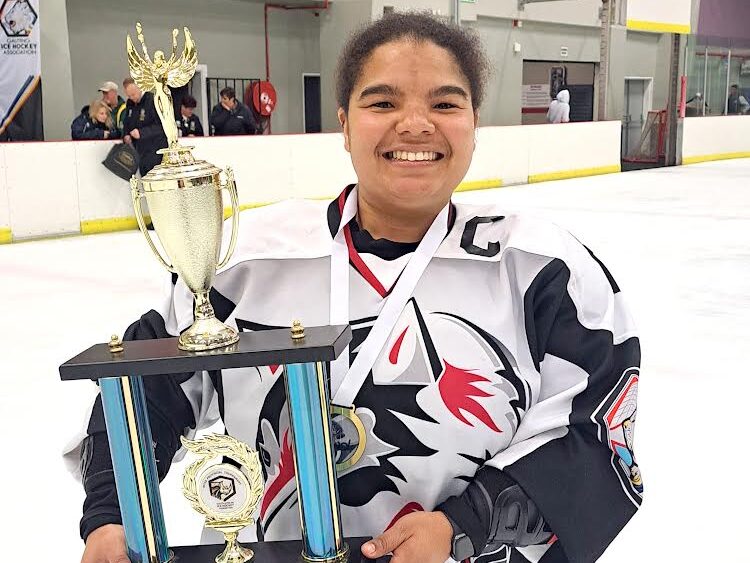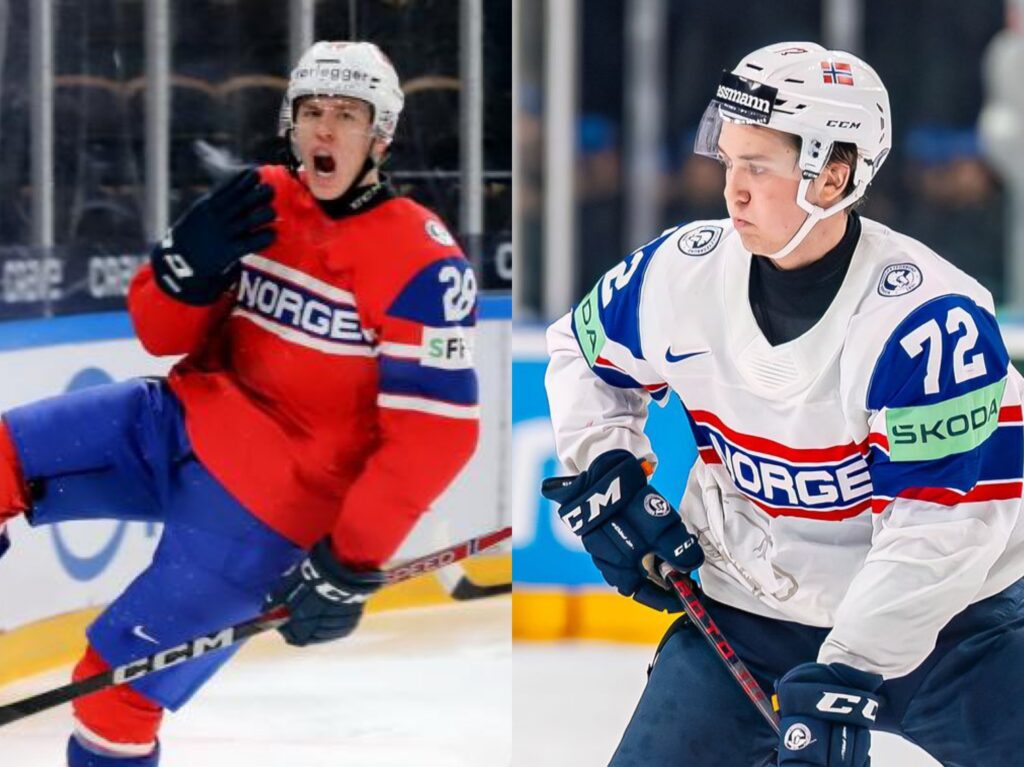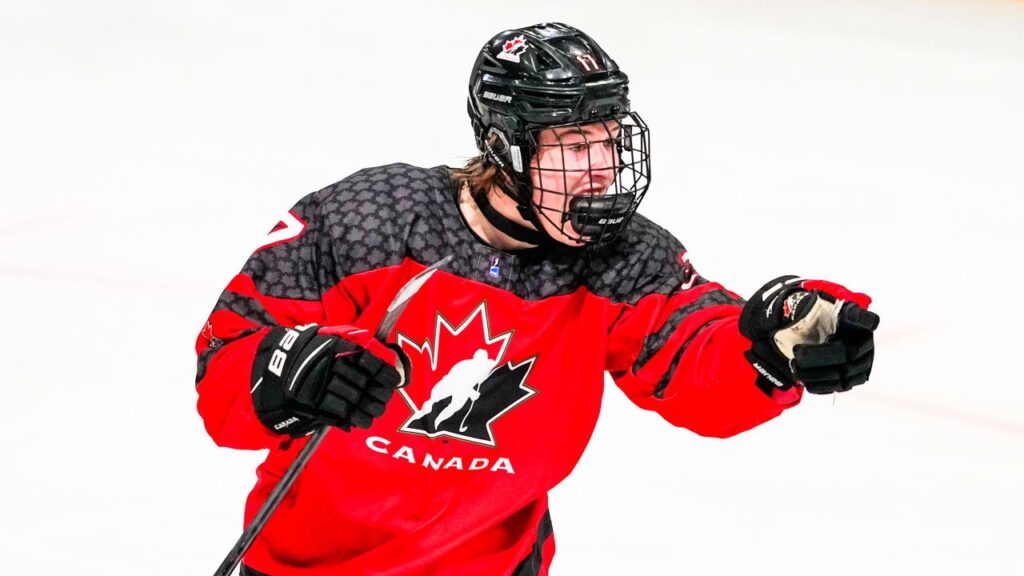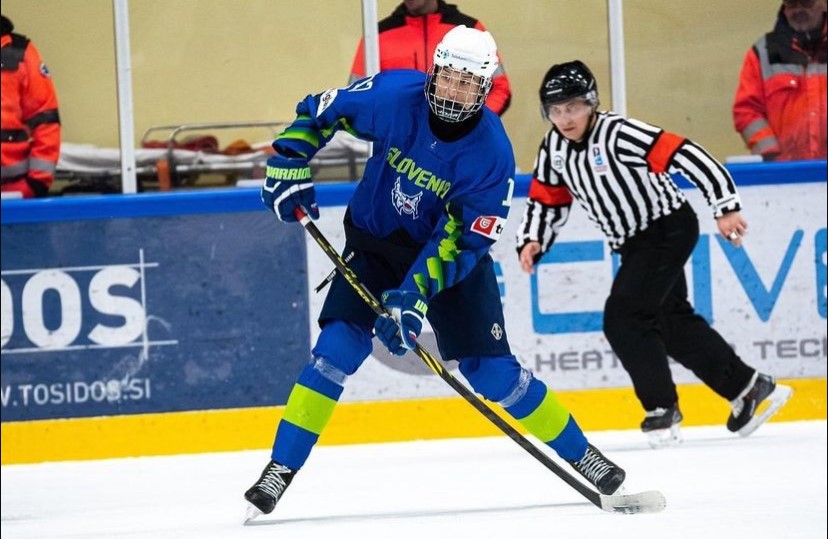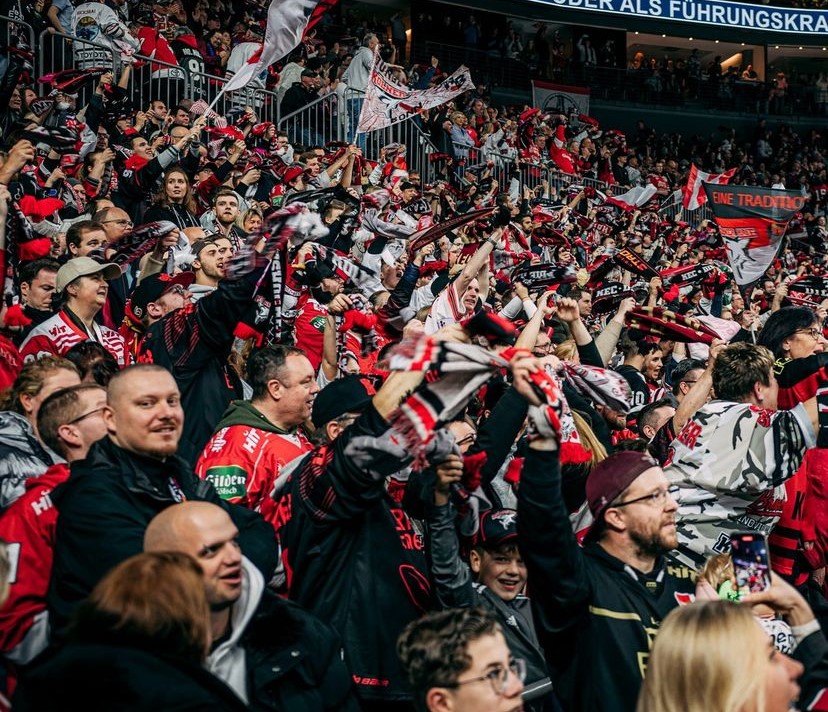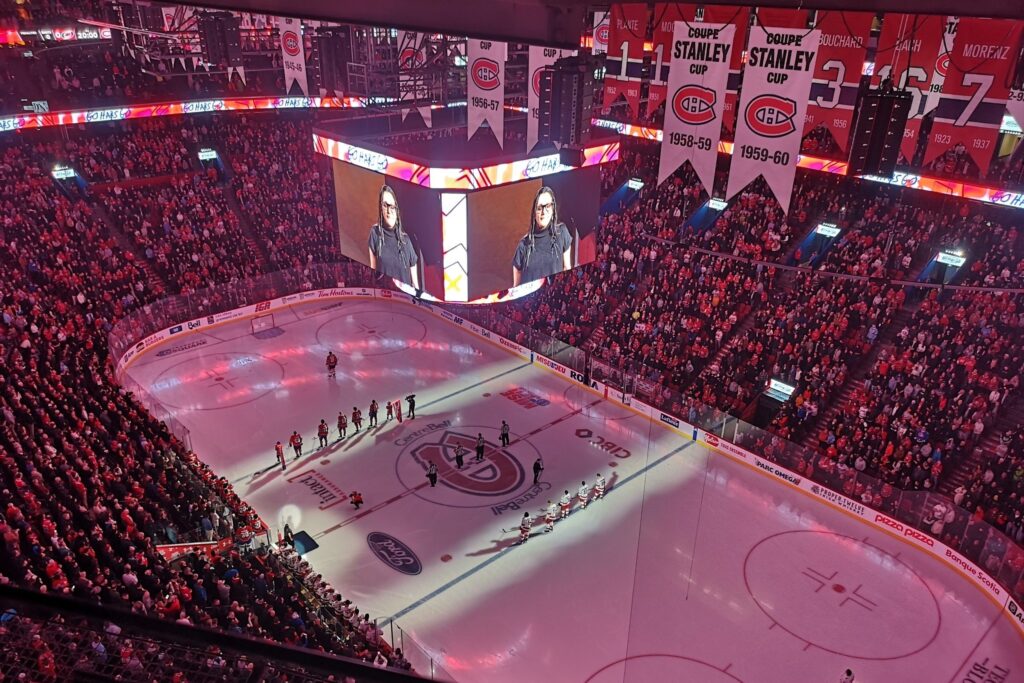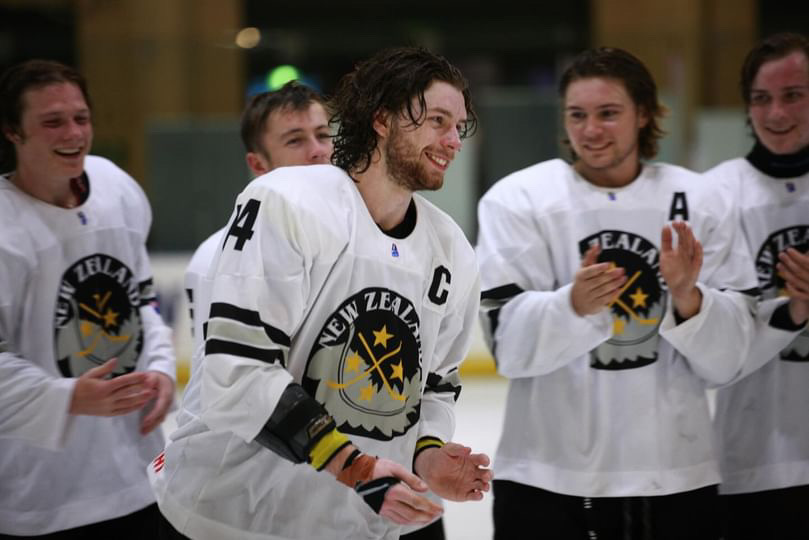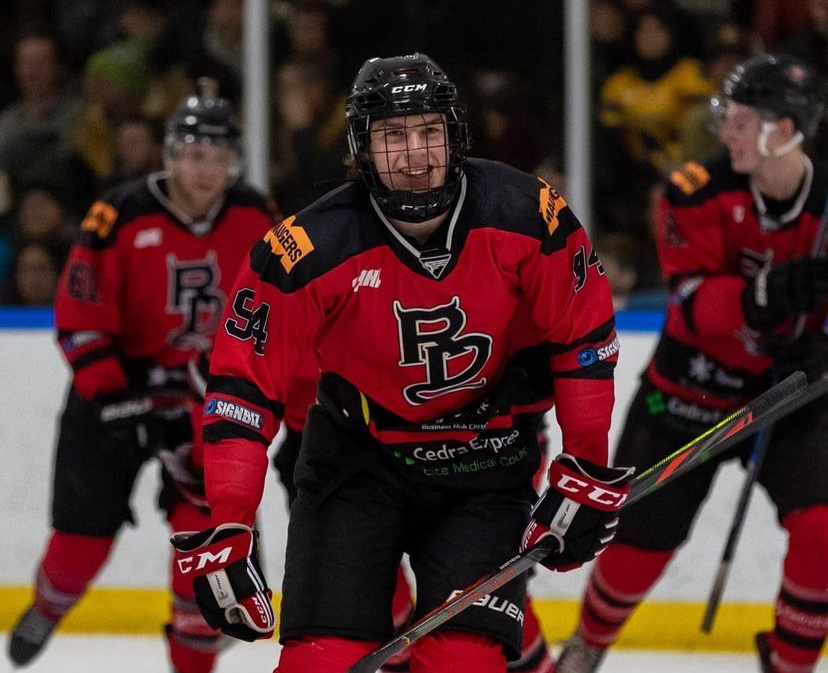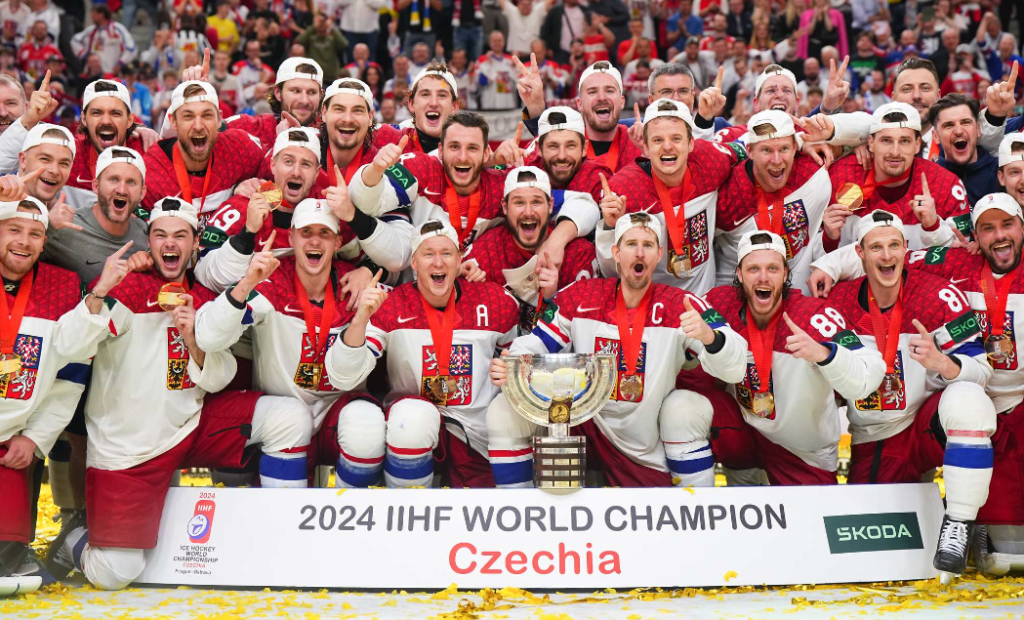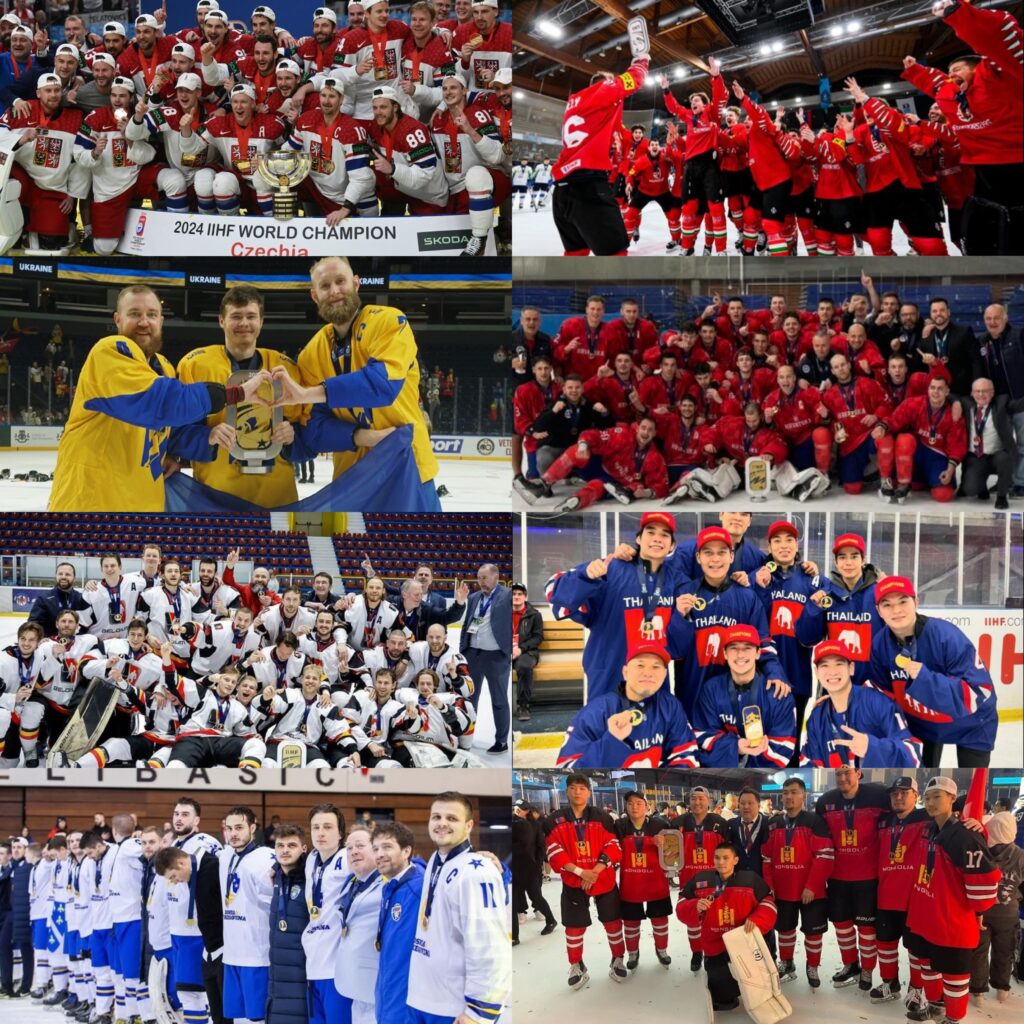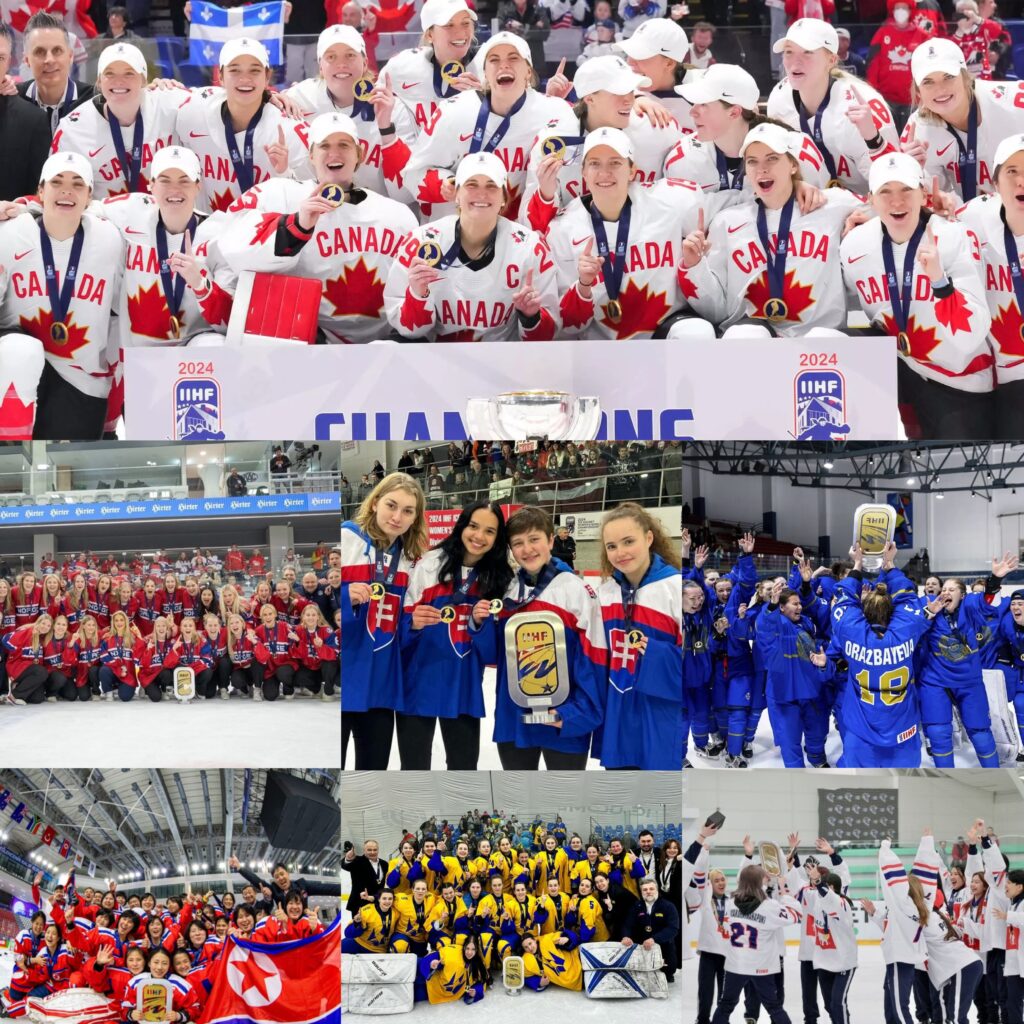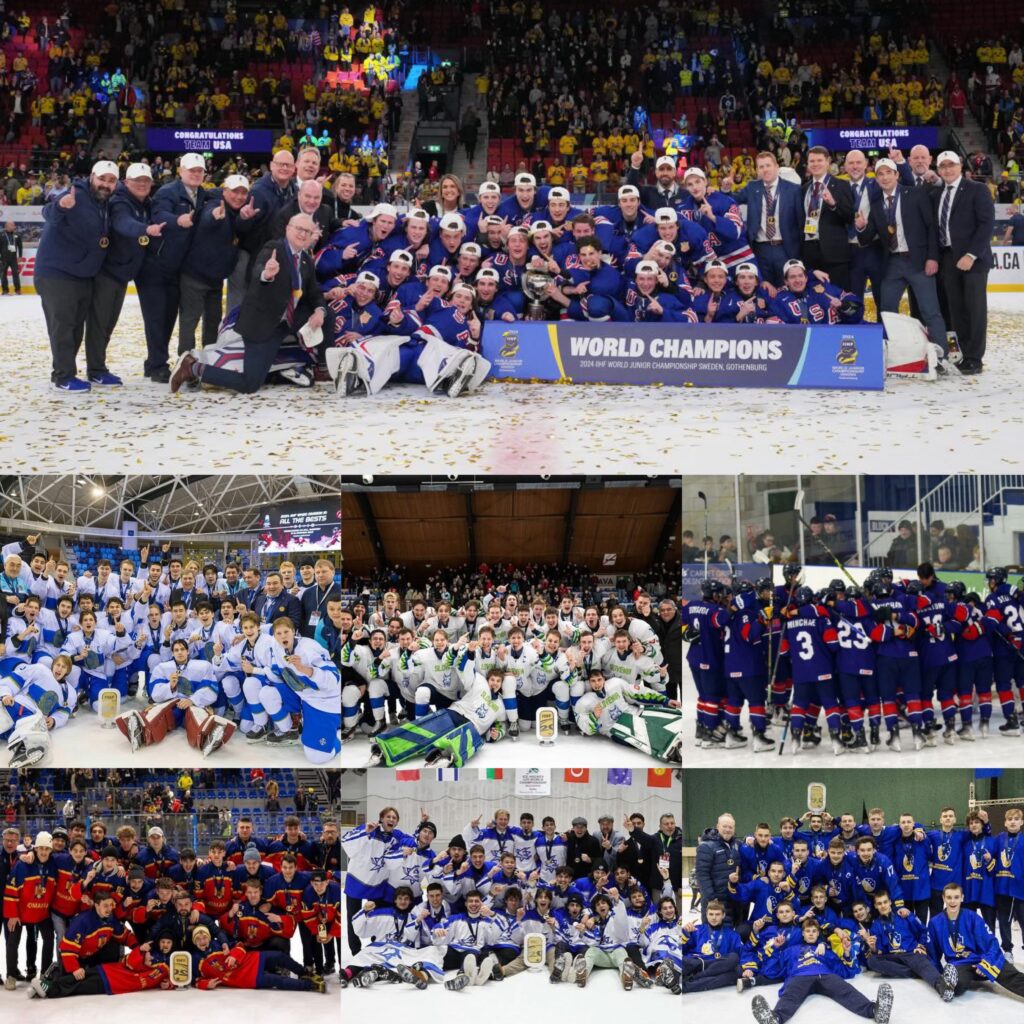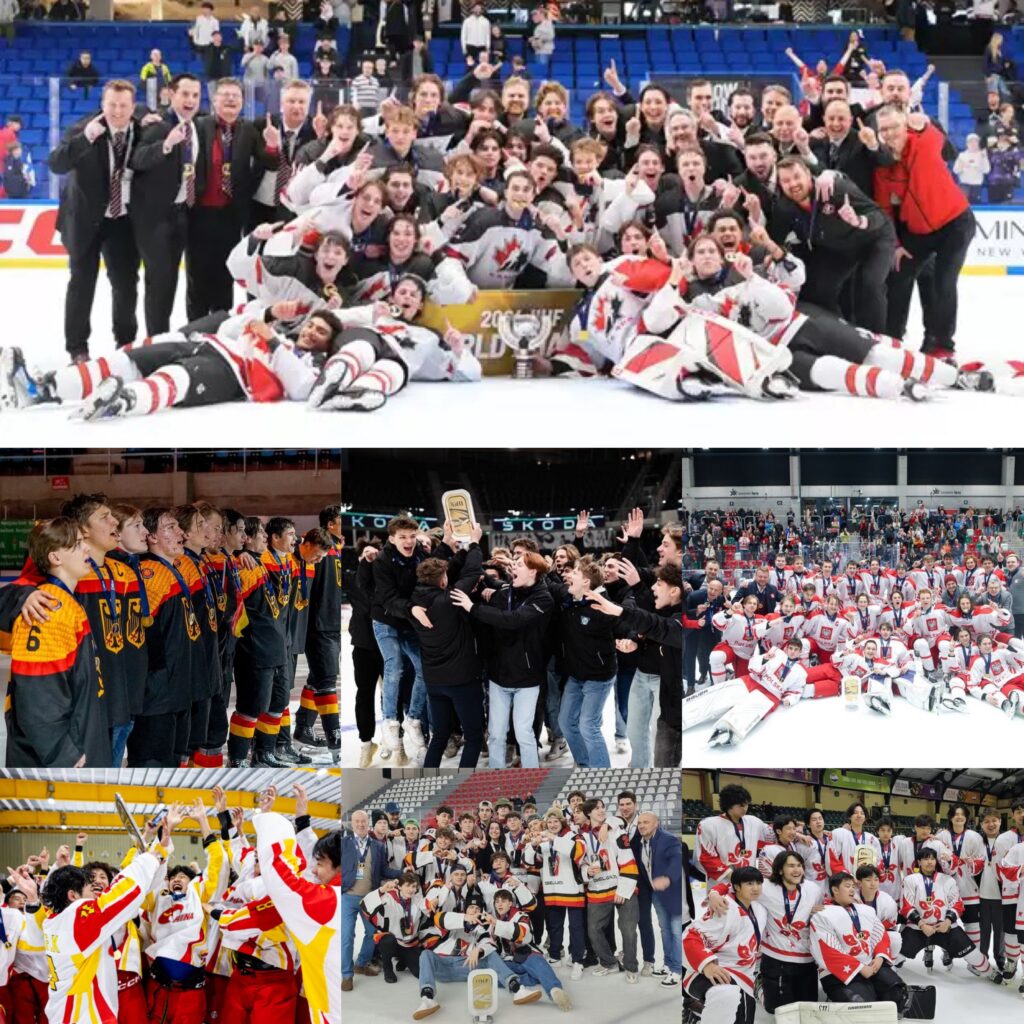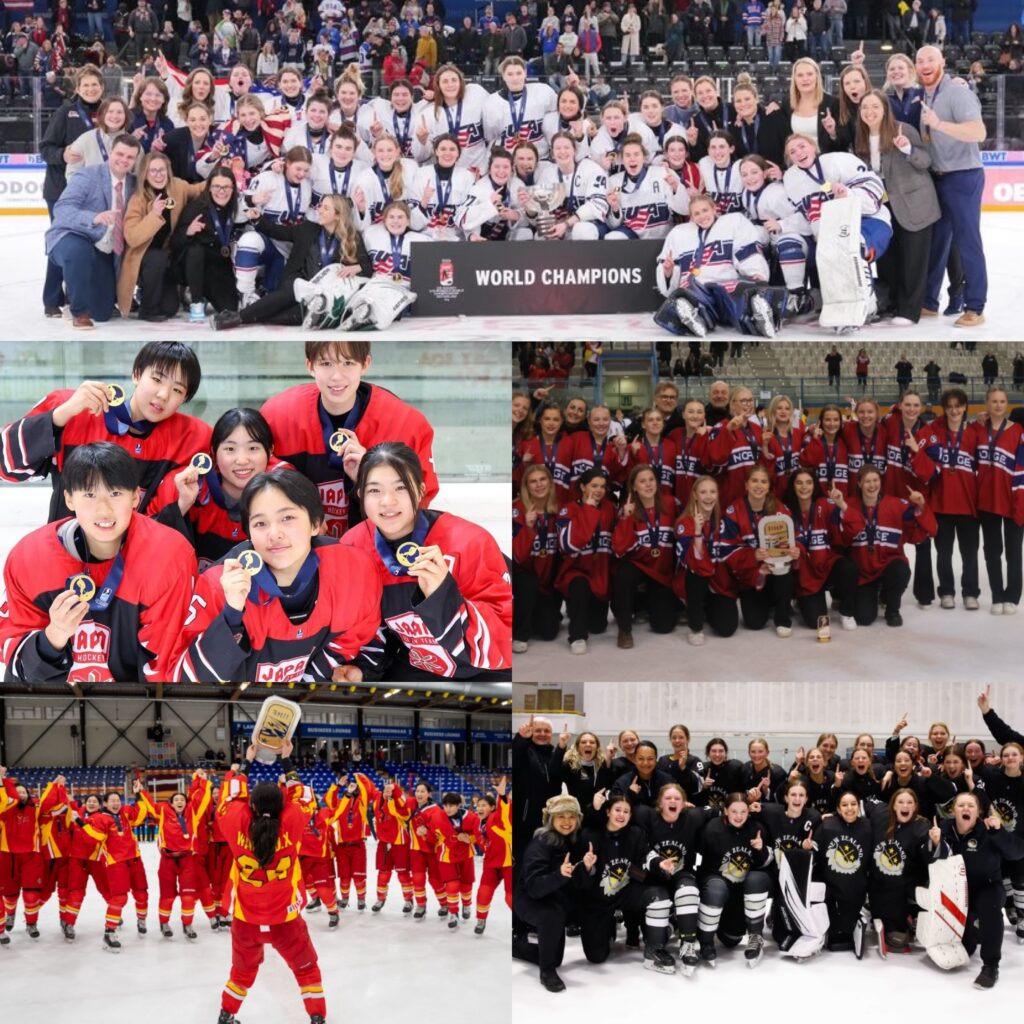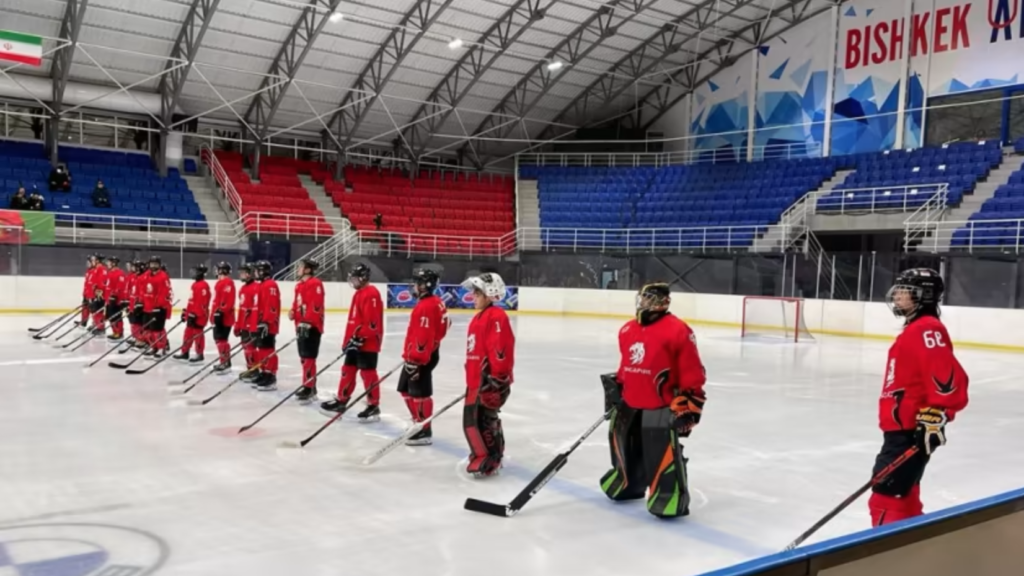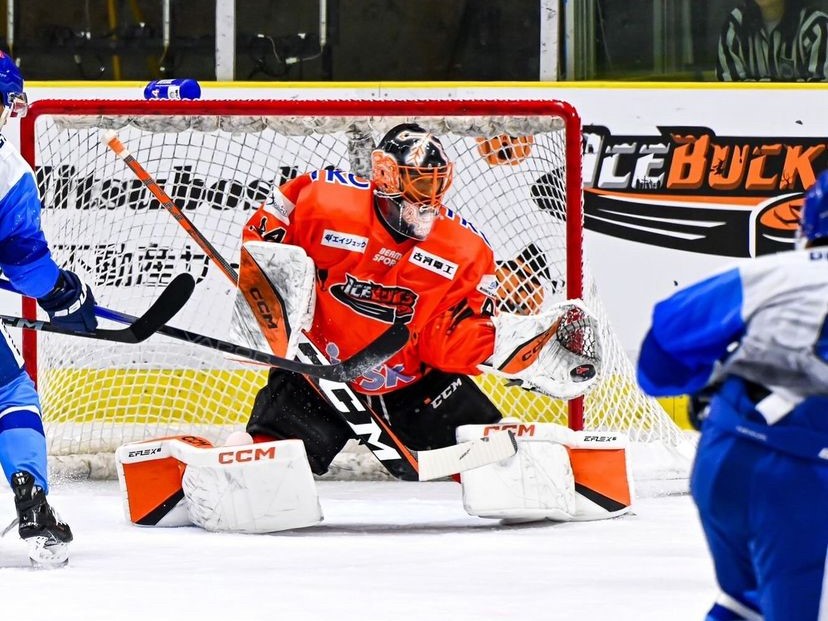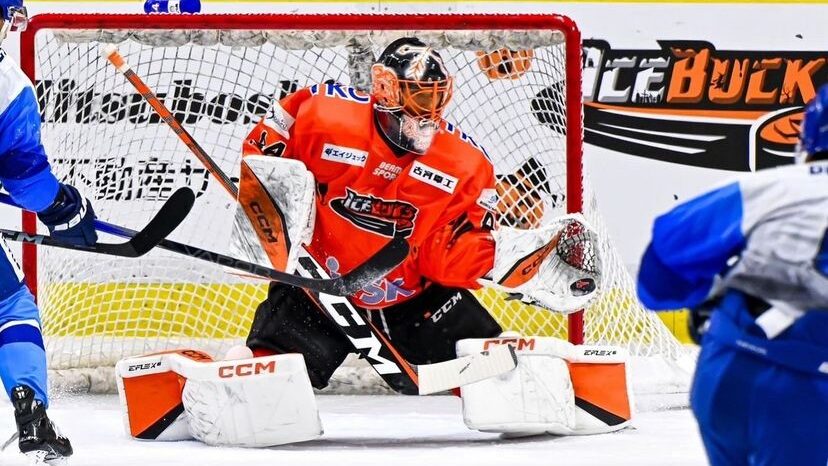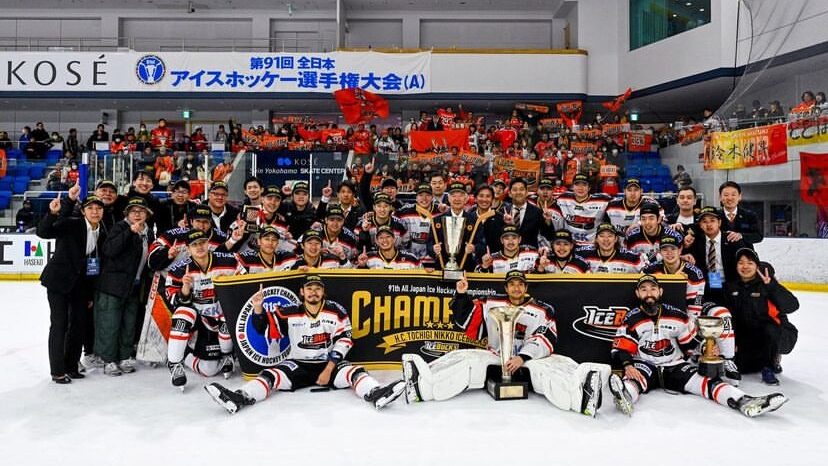Ice Hockey Champions Of The World In 2024
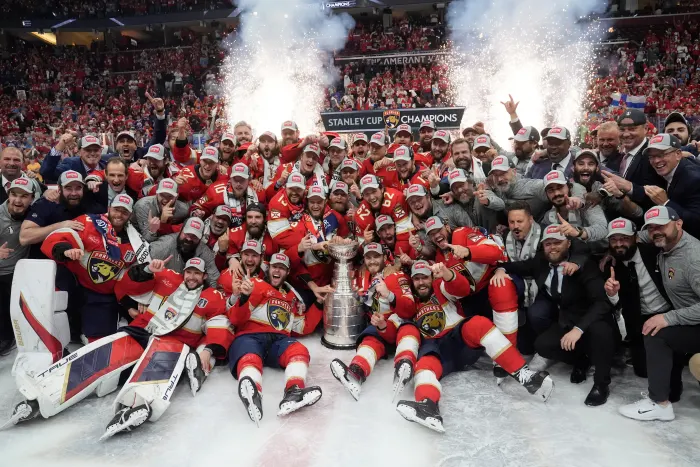
From the most southern tip of Argentina in Ushuaia, to the bustling streets of Tashkent, hundreds of champions were crowned during the 2023-24 season. Many made history, such as the Florida Panthers winning their first Stanley Cup, while others, like Tampereen Tappara completing their three-peat, continued a streak of dominance.
Below is a list of the champions in every significant men’s, women’s, collegiate, and junior league from each continent!
Note: League Name [Country]: Winning Club (# of Titles) or (Division of league with multiple champions)
Africa – Men’s Leagues
Ramadani Championship [Egypt Other]: Anubis Ice Hockey Team ![]() (3)
(3)
Championnat Marocain de Hockey sur Glace [Morocco]: Rabat Capitals ![]()
South Africa Super League [South Africa]: Pretoria Capitals ![]()
Gauteng Premier Hockey League [South Africa Regional]: Pretoria Capitals ![]() (8)
(8)
Western Province Ice Hockey League [South Africa Regional]: Cape Town Storm ![]() (5)
(5)
Africa – Women’s Leagues
South Africa Women’s Super League [South Africa]: Cape Town Queens ![]() (2)
(2)
Asia – Men’s Leagues
Multinational Leagues
Asia League Ice Hockey [JPN/KOR]: HL Anyang ![]() (8)
(8)
National Leagues
Armenian Hockey League [Armenia]: HC Pyunik Yerevan ![]() (1)
(1)
Bahraini Ice Hockey League [Bahrain]: Ministry of Interior ![]()
China Men’s Ice Hockey Tournament [China]: Beijing Ice Hockey ![]()
Beijing International Ice Hockey League [China Other]: Bears ![]() (3)
(3)
Hong Kong Ice Hockey League [Hong Kong]: Gold Club ![]() (3)
(3)
Hong Kong Amateur Hockey League [Hong Kong 2]: SWOT Hockey ![]() (2)
(2)
South China Ice Hockey League [Hong Kong Other]: Manulife Aces ![]() (2)
(2)
South China Ice Hockey League Division 3 [Hong Kong Other]: RBC Lions ![]() (3)
(3)
Indian National Championship [India]: UT Ladakh ![]() (1)
(1)
CEC Ice Hockey Championship [India Cup]: Ladakh Scouts Red ![]() (5)
(5)
Indonesia Ice Hockey League [Indonesia]: Batavia Demons ![]()
Iranian Hockey League [Iran]: Barez Tire Tehran ![]() (4)
(4)
Israel National Hockey League [Israel]: HC Ashdod Chiefs ![]() (5)
(5)
Israel National Hockey League Division 2 [Israel 2]: Yehud Lightning ![]() (2)
(2)
Israel National Hockey League Division 3 [Israel 3]: Haifa Hammers ![]() (1)
(1)
Israel Elite Hockey League [Israel Other]: Ashdod Dolphins ![]() (1)
(1)
Israeli U20 League [Israel Junior]: North Stars Metulla U20 ![]() (4)
(4)
All-Japan Ice Hockey Championship [Japan]: HC Nikkō Ice Bucks ![]() (3)
(3)
J-Ice League North [Japan Other]: Nippon Steel Muroran ![]() (4)
(4)
J-Ice League West [Japan Other]: Kagawa Ice Fellows ![]() (16)
(16)
Japan Intercollegiate Games [Japan Collegiate]: Toyo University ![]() (13)
(13)
Pro Hokei Ligasy [Kazakhstan]: Arlan Kokshetau ![]() (2)
(2)
Kazakhstan Hockey Cup [Kazakhstan Cup]: Humo Tashkent ![]() (1)
(1)
Jastar Hokei Ligasy [Kazakhstan Junior]: MHK Barys Astana ![]() (4)
(4)
Kazakhstan Jas-Cup [Kazakhstan Cup 2]: Jas-Batyr Atyrau ![]() (1)
(1)
Kuwait Ice Hockey League [Kuwait]: Kuwait Warriors ![]() (2)
(2)
Kyrgyzstan Championship [Kyrgyzstan]: Kyrgyz Temir Zholu Bishkek ![]()
MIHF National League Premier Division [Malaysia]: Outlaws ![]()
MIHF National League Top Division [Malaysia 2]: Tigers ![]()
Kuala Lumpur Cobras Hockey League [Malaysia Other]: Grinders ![]() (2)
(2)
Mongolian Ice Hockey League [Mongolia]: Darkhan ![]() (2)
(2)
North Korean Championship [North Korea]: Unknown
Pakistani Championship [Pakistan]: Gilgit Baltistan Winter Sports Association ![]() (2)
(2)
Philippine Hockey League [Philippines]: Manila Hawks Red ![]() (1)
(1)
Qatar International Ice Hockey League [Qatar]: Oil Kings ![]() (6)
(6)
Korea Domestic Championship [South Korea]: HL Anyang ![]() (12)
(12)
KUSF University League [South Korea Collegiate]: Korea University ![]() (2)
(2)
Chinese Taipei Ice Hockey League [Taiwan]: Taipei Wolves ![]()
Siam Hockey League [Thailand]: KCG Corporation ![]() (1)
(1)
Bangkok Ice Hockey League [Thailand 2]: Women Select ![]() (Elite Division), Ice Breakers Jr.
(Elite Division), Ice Breakers Jr. ![]() (Division 1), Grizzly Bears
(Division 1), Grizzly Bears ![]() (Division 2)
(Division 2)
Türkiye InterCity Süper Lig [Türkiye]: Buz Adamlar GSK ![]() (3)
(3)
Türkiye Birinci Ligi [Türkiye 2]: Kutalmışbey Ortaokulu GSK ![]() (1)
(1)
Elit Gençler Erkekler Ligi [Türkiye Junior]: Zeytinburnu Belediyesi SK U20 ![]() (3)
(3)
Turkmenistan Championship [Turkmenistan]: Galkan HC ![]() (9)
(9)
Emirates Ice Hockey League [United Arab Emirates]: Dubai White Bears ![]() (3)
(3)
Dubai Mighty Camels League [United Arab Emirates 2]: Unknown
Uzbekistan Ice Hockey League [Uzbekistan]: Tashkent Select ![]() (1)
(1)
Asia – Women’s Leagues
Chinese Women’s Ice Hockey League [China]: Shenzhen Kunlun Red Star ![]() (1)
(1)
Hong Kong Women’s Hockey League [Hong Kong]: Chicco ![]() (6)
(6)
India National Championship [India]: Indo Tibetan Border Police ![]() (2)
(2)
CEC Ice Hockey Championship [India Cup]: Indo Tibetan Border Police ![]() (2)
(2)
Iranian Women’s Hockey League [Iran]: M.R Shahre-Rey ![]() (2)
(2)
Japanese Women’s Hockey League [Japan]: Seibu Princess Rabbits ![]() (9)
(9)
All-Japan Women’s Ice Hockey Championship [Japan Cup]: Seibu Princess Rabbits ![]() (7)
(7)
Qyzdar Hokey Ligasy [Kazakhstan]: Aisulu Almaty ![]() (20)
(20)
North Korean Women’s Championship [North Korea]: Unknown
Korean Women’s Hockey League [South Korea]: Unknown
Türkiye Kadinlar Süper Lig [Türkiye]: Istanbul BBSK ![]() (1)
(1)
Türkiye 1. Liga [Türkiye 2]: Yükselis SK ![]() (1)
(1)
Emirates Women’s Ice Hockey League [United Arab Emirates]: Al Dhabi ![]() (1)
(1)
Europe – Men’s Leagues
IIHF Club Competitions
Champions Hockey League: Genève-Servette HC ![]() (1)
(1)
Continental Cup: Nomad Astana ![]() (1)
(1)
Spengler Cup: HC Davos ![]() (16)
(16)
Multinational Leagues
Alps Hockey League [AUT/ITA/SLO]: Rittner Buam ![]() (2)
(2)
BeNeLiga [BEL/GER/NED]: Bulldogs de Liège ![]() (2) (4 Belgian Titles)
(2) (4 Belgian Titles)
Erste Liga [HUN/ROU]: CSM Corona Brașov ![]() (1)
(1)
International Hockey League [CRO/SRB/SLO]: Triglav Kranj ![]() (3)
(3)
Kontinental Hockey League [BLR/KAZ/RUS]: Metallurg Magnitogorsk ![]() (3) (7 Russian Titles)
(3) (7 Russian Titles)
Optibet Hokeja Liga [EST/LAT/LTU]: HK Mogo ![]() (3)
(3)
win2day ICE Hockey League [AUT/HUN/ITA/SLO]: EC Red Bull Salzburg ![]() (9) (11 Austrian Titles)
(9) (11 Austrian Titles)
National Leagues
Nationalliga [Austria 2]: Red Bull Hockey Juniors ![]() (3)
(3)
Österreichische Eishockey Liga [Austria 3]: KSV Eishockey ![]() (2)
(2)
Austrian Regional Leagues [Austria 4]: ESC Steindorf ![]() (Kärntner Liga), EV Ternitzer Eiswolfe
(Kärntner Liga), EV Ternitzer Eiswolfe ![]() (Landesliga Niederösterreich), EC Wels
(Landesliga Niederösterreich), EC Wels ![]() (Oberösterreichische Eishockeyliga), SPG Schuttdorf – UTT
(Oberösterreichische Eishockeyliga), SPG Schuttdorf – UTT ![]() (Salzburg Landesliga), EV Leoben Kings
(Salzburg Landesliga), EV Leoben Kings ![]() (Styria Eliteliga), EHC Immobau Mils
(Styria Eliteliga), EHC Immobau Mils ![]() (Tyrol Landesliga), EHC Tigers Dornbirn
(Tyrol Landesliga), EHC Tigers Dornbirn ![]() (VEHL), EV Stockerau
(VEHL), EV Stockerau ![]() (Wiener Landesliga)
(Wiener Landesliga)
Belarusian Extraleague [Belarus]: Metallurg Zhlobin ![]() (4)
(4)
Ruslan Salei Cup [Belarus Cup]: HK Vitebsk ![]() (2)
(2)
Vysshaya Liga [Belarus 2]: Yunior Minsk ![]() (7)
(7)
Vladimir Tsyplakov Cup [Belarus Cup 2]: Team Belarus U18 ![]() (2)
(2)
Belgische Beker [Belgium Cup]: HYC Herentals ![]() (14)
(14)
Belgian First Division [Belgium 2]: Chiefs Leuven-2 ![]() (4)
(4)
Belgian Division II [Belgium 3]: Antwerp Phantoms White ![]() (1)
(1)
Belgian Division III [Belgium 4]: Ghent Dragons ![]()
Belgian Division IV [Belgium 5]: HYC Funny Stars ![]() (1)
(1)
Bosanskohercegovacka Hokejaška Liga [Bosnia and Herzegovina]: HK Stari Grad Vukovi ![]() (7)
(7)
Darzhavno Parvenstvo [Bulgaria]: Irbis-Skate Sofia ![]() (8)
(8)
Kupa na Bŭlgariya [Bulgaria Cup]: Irbis-Skate Sofia ![]() (8)
(8)
Balkan League [Bulgaria 2]: Ice Devils Sofia ![]() (2)
(2)
Croatian Ice Hockey League [Croatia]: KHL Sisak ![]() (2)
(2)
Tipsport Extraliga [Czechia]: HC Oceláři Třinec ![]() (6)
(6)
Chance Liga [Czechia 2]: VHK Vsetín ![]() (1)
(1)
Czech 2.liga [Czechia 3]: Piráti Chomutov ![]() (1)
(1)
Krajské hokejové přebory [Czechia 4]: HC Rakovník ![]() (Central Bohemia), HC Kohouti Česká Třebová
(Central Bohemia), HC Kohouti Česká Třebová ![]() (Hradec Králové), HC Autocentrum Jičín
(Hradec Králové), HC Autocentrum Jičín ![]() (Liberec), MHK Slovan Orlová
(Liberec), MHK Slovan Orlová ![]() (North Moravia), HC Rebel město Nejdek
(North Moravia), HC Rebel město Nejdek ![]() (Plzeň), TJ Hluboká nad Vltavou
(Plzeň), TJ Hluboká nad Vltavou ![]() (South Bohemia), SK Prostějov 1913
(South Bohemia), SK Prostějov 1913 ![]() (South Moravia), SK Kadaň
(South Moravia), SK Kadaň ![]() (Ústí nad Labem), HC Chotěboř
(Ústí nad Labem), HC Chotěboř ![]() (Vysočina)
(Vysočina)
Krajske souteze muzu [Czechia 5]: TJ Sokol Březina ![]() (Blansko Okres), HAS Jihlava
(Blansko Okres), HAS Jihlava ![]() (Jihlava Okres), HC Chotíkov
(Jihlava Okres), HC Chotíkov ![]() (KSM Plzenskeho kraje sk. A), TJ Město Zbiroh
(KSM Plzenskeho kraje sk. A), TJ Město Zbiroh ![]() (KSM Plzenskeho kraje sk. B), HC Spartak Žebrák B
(KSM Plzenskeho kraje sk. B), HC Spartak Žebrák B ![]() (KSM Plzenskeho kraje sk. C), HC Příbram B
(KSM Plzenskeho kraje sk. C), HC Příbram B ![]() (KSM Stredoceskeho), Milo Olomouc
(KSM Stredoceskeho), Milo Olomouc ![]() (Olomouc Okres), SKA Napajedla
(Olomouc Okres), SKA Napajedla ![]() (Zlín Okres)
(Zlín Okres)
Pražské Ligy Ledního Hokeje [Czechia Other]: HC Smečka Sion ![]() (Group 1), Rednecks
(Group 1), Rednecks ![]() (Group 2), Zličín Hockey Represent
(Group 2), Zličín Hockey Represent ![]() (Group 3), HC Cheza Praha
(Group 3), HC Cheza Praha ![]() (Group 4)
(Group 4)
CCM liga [Czechia Other]: TJ Bohemians Praha ![]() (2)
(2)
Metal Ligaen [Denmark]: SønderjyskE Ishockey ![]() (10)
(10)
Metal Cup [Denmark Cup]: SønderjyskE Ishockey ![]() (5)
(5)
1. Division [Denmark 2]: Esbjerg IK II ![]() (1)
(1)
2. Division (Denmark 3): Unknown
Meistriliiga [Estonia]: Narva HK PSK ![]() (3)
(3)
Tallinna Harrastajate Hokiliiga [Estonia 2]: HC Tigers ![]() (Group 1), HK Vipers
(Group 1), HK Vipers ![]() (Group 2), Wild Vepr
(Group 2), Wild Vepr ![]() (Group 3), HK Kakumäe Kullid
(Group 3), HK Kakumäe Kullid ![]() (Group 4)
(Group 4)
Liiga [Finland]: Tampereen Tappara ![]() (13) (20 Finnish Titles)
(13) (20 Finnish Titles)
Mestis [Finland 2]: Iisalmen Peli-Karhut ![]() (1)
(1)
Suomi-sarja [Finland 3]: Nokian Pyry ![]() (2)
(2)
II-Divisioona [Finland 4]: TuusKi ![]() (Lohko 1), Kiekko-Ahma
(Lohko 1), Kiekko-Ahma ![]() (Lohko 2), Malax IF
(Lohko 2), Malax IF ![]() (Lohko 3), PEPO HC
(Lohko 3), PEPO HC ![]() (Lohko 4), Laser HT
(Lohko 4), Laser HT ![]() (Lohko 5), Turku Chiefs
(Lohko 5), Turku Chiefs ![]() (Lohko 6)
(Lohko 6)
III-Divisioona [Finland 5]: EVU ![]() (Lohko 1), HPK Icedogs
(Lohko 1), HPK Icedogs ![]() (Lohko 2), Warrantti Mahtikukot
(Lohko 2), Warrantti Mahtikukot ![]() (Lohko 3), Parru HT
(Lohko 3), Parru HT ![]() (Lohko 4), Kuru Hockey
(Lohko 4), Kuru Hockey ![]() (Lohko 5), Rauma Tigers
(Lohko 5), Rauma Tigers ![]() (Lohko 6), Ahmat Haukipudas
(Lohko 6), Ahmat Haukipudas![]() (Lohko 7), PiPS
(Lohko 7), PiPS ![]() (Lohko 8)
(Lohko 8)
IV-Divisioona [Finland 6]: KHK ![]() (Lohko 1), MaKo
(Lohko 1), MaKo ![]() (Lohko 2), UJK
(Lohko 2), UJK ![]() (Lohko 3)
(Lohko 3)
Synerglace Ligue Magnus [France]: Dragons de Rouen ![]() (18)
(18)
Coupe de France [France Cup]: Brûleurs de Loups de Grenoble ![]() (6)
(6)
FFHG Division 1 [France 2]: Corsaires de Nantes ![]() (1)
(1)
FFHG Division 2 [France 3]: Ours de Villard-de-Lans ![]() (1)
(1)
FFHG Division 3 [France 4]: Ducs de Dijon ![]() (1)
(1)
Trophée Fédéral Loisirs [France 5]: Français Volants ![]() (3)
(3)
Georgian Championship [Georgia]: Bakurianis Mimino ![]() (7)
(7)
Penny Deutsche Eishockey Liga [Germany]: Eisbären Berlin ![]() (10) (Also has 15 East German Titles)
(10) (Also has 15 East German Titles)
Deutsche Eishockey Liga 2 [Germany 2]: Eisbären Regensburg ![]() (1)
(1)
Oberliga [Germany 3]: 1. EV Weiden ![]() (2)
(2)
Regionalliga [Germany 4]: EHC Königsbrunn ![]() (Bayernliga), EC Harzer Falken
(Bayernliga), EC Harzer Falken ![]() (Nord), FASS Berlin
(Nord), FASS Berlin ![]() (Ost), HEC Eisbären Heilbronn
(Ost), HEC Eisbären Heilbronn ![]() (Süd), Ratinger Ice Aliens
(Süd), Ratinger Ice Aliens ![]() (West)
(West)
German Regional Leagues [Germany 5]: RT Bad Nauheim 1b ![]() (Hessenliga), 1. CfR Pforzheim EHC
(Hessenliga), 1. CfR Pforzheim EHC ![]() (Landesliga Baden-Württemberg), Waldkraiburg
(Landesliga Baden-Württemberg), Waldkraiburg ![]() (Landesliga Bayern), FASS Berlin II
(Landesliga Bayern), FASS Berlin II ![]() (Landesliga Berlin), ESV Grizzlys Bergkamen
(Landesliga Berlin), ESV Grizzlys Bergkamen ![]() (Landesliga NRW), EHC Zweibrücken II
(Landesliga NRW), EHC Zweibrücken II ![]() (Landesliga Rheinland-Pfalz), EG Diez-Limburg
(Landesliga Rheinland-Pfalz), EG Diez-Limburg ![]() (Rheinland-Pfalz Cup), Crocodiles Hamburg
(Rheinland-Pfalz Cup), Crocodiles Hamburg ![]() (Verbandsliga Nord)
(Verbandsliga Nord)
German Regional Leagues [Germany 6]: EHC Straubing ![]() (Bezirksliga Bayern), Soester EG
(Bezirksliga Bayern), Soester EG ![]() (Bezirksliga NRW), Wallernhausen Pirates
(Bezirksliga NRW), Wallernhausen Pirates ![]() (Landesliga Hessen), EC Hannover Indians U23
(Landesliga Hessen), EC Hannover Indians U23 ![]() (Landesliga Nord), Dresden Devils
(Landesliga Nord), Dresden Devils ![]() (Landesliga Sachsen), Malchower Wölfe
(Landesliga Sachsen), Malchower Wölfe ![]() (Landesliga Pomerania), Hurricane Erfurt
(Landesliga Pomerania), Hurricane Erfurt ![]() (Landesliga Thüringen)
(Landesliga Thüringen)
Elite Ice Hockey League [Great Britain]: Regular Season – Sheffield Steelers ![]() (6) (10 British Titles) / Playoffs – Sheffield Steelers
(6) (10 British Titles) / Playoffs – Sheffield Steelers ![]() (6)
(6)
Elite Ice Hockey League Challenge Cup [Great Britain Cup]: Sheffield Steelers ![]() (2)
(2)
Planet Ice National Ice Hockey League [Great Britain 2]: Regular Season – Leeds Knights ![]() (2) / Playoffs – Peterborough Phantoms
(2) / Playoffs – Peterborough Phantoms ![]() (1)
(1)
National Ice Hockey League Division 1 [Great Britain 3]: Regular Season – Billingham Stars ![]() (North) / Playoffs – Blackburn Hawks
(North) / Playoffs – Blackburn Hawks ![]() (North), Regular Season – Streatham Redhawks
(North), Regular Season – Streatham Redhawks ![]() (South) / Playoffs – Chelmsford Chieftains
(South) / Playoffs – Chelmsford Chieftains ![]() (South)
(South)
National Ice Hockey League Division 2 [Great Britain 4]: Regular Season – Telford Tigers 2 ![]() (North) / Playoffs – Billingham Buccaneers
(North) / Playoffs – Billingham Buccaneers ![]() (North), Regular Season – Guildford Phoenix
(North), Regular Season – Guildford Phoenix ![]() (South) / Playoffs – Basingstoke Buffalo
(South) / Playoffs – Basingstoke Buffalo ![]() (South)
(South)
Scottish National League [Great Britain – Scotland]: Regular Season – Aberdeen Lynx ![]() (2) / Playoffs – Edinburgh Capitals
(2) / Playoffs – Edinburgh Capitals ![]() (1)
(1)
Scottish Cup [Great Britain Cup – Scotland]: Aberdeen Lynx ![]() (1)
(1)
Northern League [Great Britain Other]: Edinburgh Capitals ![]() (1)
(1)
Nigel Smeaton Memorial Cup [Great Britain – Northern Ireland]: Belfast Renegades ![]() (1)
(1)
Athens Ice Hockey League [Greece]: Athens Centaurs ![]() (1)
(1)
OB I bajnokság [Hungary]: Ferencvárosi TC ![]() (31)
(31)
Magyar Kupa [Hungary Cup]: Hydro Fehérvár AV19 ![]() (4)
(4)
Magyar Szuperkupa [Hungary SuperCup]: Ferencvárosi TC ![]() (2)
(2)
Andersen Liga [Hungary 2]: Györi ETO HC ![]() (1)
(1)
OB III. bajnokság [Hungary 3]: Hevület Székesfehérvár ![]() (2)
(2)
OB IV. bajnokság [Hungary 4]: White Sharks HC ![]() (Group A), OHA Goddamn Monkeys
(Group A), OHA Goddamn Monkeys ![]() (Group B), VIP Wizards B
(Group B), VIP Wizards B ![]() (Group C), Zempléni Hiúzok
(Group C), Zempléni Hiúzok ![]() (Group D)
(Group D)
Icelandic Hockey League [Iceland]: Skautafélag Reykjavíkur ![]() (7)
(7)
Italian Hockey League – Serie A [Italy]: Rittner Buam ![]() (6)
(6)
Coppa Italia [Italy Cup]: Hockey Pergine Sapiens ![]() (1)
(1)
Supercoppa Italiana [Italy SuperCup]: SG Cortina ![]() (1)
(1)
Italian Hockey League [Italy 2]: Hockey Pergine Sapiens ![]() (1)
(1)
Italian Hockey League – Division 1 [Italy 3]: Hockey Club Aosta ![]() (2)
(2)
Leghe amatoriali altoatesine di hockey su ghiaccio [Italy 4]: Unknown
Junioru Attistibas Hokeja Liga [Latvia 2]: HS Falcons ![]() (1)
(1)
Neatkarīga amatieru hokeja līga [Latvia 3]: Mārupe ![]() (3. Liga), Huligan
(3. Liga), Huligan ![]() (4. Liga)
(4. Liga)
Nacionaline Ledo Ritulo Lyga [Lithuania]: Energija Elektrenai ![]() (22)
(22)
Lithuanian Second League [Lithuania 2]: Bizonai-Ekobaze Kaunas ![]()
Luxembourg Hockey League Division 1 [Luxembourg]: Tornado Luxembourg ![]() (2)
(2)
Luxembourg Hockey League Division 2 [Luxembourg 2]: Hurricanes Luxembourg U20 II ![]() (1)
(1)
Eredivisie [Netherlands]: Unis Flyers Heerenveen ![]() (11)
(11)
Nederlandse Beker [Netherlands Cup]: HYS The Hague ![]() (6)
(6)
Ron Berteling Schaal [Netherlands SuperCup]: HYS The Hague ![]() (6)
(6)
Eerste Divisie [Netherlands 2]: Amsterdam Tigers ![]() (3)
(3)
Tweede Divisie [Netherlands 3]: HCA Amsterdam ![]() (3)
(3)
Derde Divisie [Netherlands 4]: Eindhoven Flyers ![]() (1)
(1)
Vierde Divisie [Netherlands 5]: Eindhoven Kemphanen 2 ![]()
Vijfde Divisie [Netherlands 6]: Sweetlake Legends Zoetermeer ![]()
Zesde Divisie [Netherlands 7]: Hijs Hokij Den Haag Herons ![]() (1)
(1)
EliteHockey Ligaen [Norway]: Storhamar ![]() (8)
(8)
1. divisjon [Norway 2]: Narvik Hockey ![]() (4)
(4)
2. divisjon [Norway 3]: Manglerud Star ![]() (1)
(1)
3. divisjon [Norway 4]: Nesøya IL ![]() (East), IHK Stavanger
(East), IHK Stavanger ![]() (South/West)
(South/West)
4. divisjon [Norway 5]: Nes IK ![]()
5. divisjon [Norway 6]: Lørenskog 2 ![]() (1)
(1)
Tauron Polska Hokej Liga [Poland]: Unia Oświęcim ![]() (9)
(9)
Puchar Polski [Poland Cup]: GKS Tychy ![]() (10)
(10)
Superpuchar Polski [Poland SuperCup]: GKS Tychy ![]() (4)
(4)
Mlodziezowa Hokej Liga [Poland 2]: Naprzód Janów ![]() (5)
(5)
Polish 2. Liga [Poland 3]: KS Hockey Team Oświęcim ![]() (1)
(1)
Polish 3. Liga [Poland 4]: KH Warszawa Capitals II ![]() (3)
(3)
Campeonato Nacional Hoquei no Gelo 3×3 [Portugal]: HC Porto ![]() (1)
(1)
Campionatul National de Seniori [Romania]: CSM Corona Brașov ![]() (6)
(6)
Cupa Romaniei la Hochei pe gheaţă [Romania Cup]: CSM Corona Brașov ![]() (4)
(4)
Vysshaya Hokkeinaya Liga [Russia 2]: Neftyanik Almetyevsk ![]() (2)
(2)
Night Hockey League [Russia Other]: Pioneer Yekaterinburg ![]() (40+), Filigran Novosibirsk
(40+), Filigran Novosibirsk ![]() (50+), Meteor Moskva
(50+), Meteor Moskva ![]() (Dreams League 18+), Wolfram-A Vostok
(Dreams League 18+), Wolfram-A Vostok ![]() (Hopes League 18+)
(Hopes League 18+)
Russian Amateur Hockey Leagues [Russia Other]: Krasnoyarsk Region ![]() (All-Russian Spartakiad), EcoMobil-2
(All-Russian Spartakiad), EcoMobil-2 ![]() (Chelyabinsk AHL), Tymlat Petropavlovsk-Kamchatsky
(Chelyabinsk AHL), Tymlat Petropavlovsk-Kamchatsky ![]() (Kamchatka Territory Championship), Kurganstalmost Kurgan
(Kamchatka Territory Championship), Kurganstalmost Kurgan ![]() (Kurgan Championship), Unknown (South-East Tatarstan HL), Cosmos Kaluga
(Kurgan Championship), Unknown (South-East Tatarstan HL), Cosmos Kaluga ![]() (Moskva Spartakiad), SKA Yekaterinburg
(Moskva Spartakiad), SKA Yekaterinburg ![]() (Sverdlovsk Championship), Grenada Naberezhnye Chelny
(Sverdlovsk Championship), Grenada Naberezhnye Chelny ![]() (Tatarstan AHL)
(Tatarstan AHL)
Prvenstvo Srbije [Serbia]: SKHL Crvena Zvezda ![]() (11)
(11)
Tipos Extraliga [Slovakia]: HK Nitra ![]() (2)
(2)
Slovak Cup [Slovakia Cup]: Vlci Žilina ![]() (2)
(2)
Slovenská hokejová liga [Slovakia 2]: Vlci Žilina ![]() (2)
(2)
Slovak 2.Liga [Slovakia 3]: HK Púchov ![]() (2)
(2)
Državno prvenstvo Slovenije [Slovenia]: HK Olimpija Ljubljana ![]() (19) (First 15 Titles won by former HDD Olimpija)
(19) (First 15 Titles won by former HDD Olimpija)
Liga Nacional de Hockey Hielo [Spain]: Club Hielo Jaca ![]() (14)
(14)
Copa del Rey [Spain Cup]: Club Hielo Jaca ![]() (17)
(17)
Swedish Hockey League [Sweden]: Skellefteå AIK ![]() (4)
(4)
HockeyAllsvenskan [Sweden 2]: Brynäs IF ![]() (4)
(4)
HockeyEttan [Sweden 3]: Promoted Team – Vimmerby HC ![]()
HockeyTvåan [Sweden 4]: Promoted Teams – IK Pantern ![]() , Sollentuna HC
, Sollentuna HC ![]()
HockeyTrean [Sweden 5]: Promoted Teams – Göteborgs IK ![]() , HC Vita Hästen
, HC Vita Hästen ![]() , MG/Arvidsjaur
, MG/Arvidsjaur ![]() , Motala AIF
, Motala AIF ![]() , Ockelbo HC
, Ockelbo HC ![]()
HockeyFyran [Sweden 6]: Promoted Teams – Bålsta HC ![]() , IFK Mariefred
, IFK Mariefred ![]() , Kallhälls IF
, Kallhälls IF ![]()
Division 5 [Sweden 7]: Täby Titans ![]() (Norra), FoC Farsta 2
(Norra), FoC Farsta 2 ![]() (Södra)
(Södra)
National League [Switzerland]: ZSC Lions ![]() (9)
(9)
National Cup [Switzerland Cup]: EHC Basel ![]() (1)
(1)
Swiss League [Switzerland 2]: HC La Chaux-de-Fonds ![]() (7)
(7)
MyHockey League [Switzerland 3]: EHC Chur ![]() (1)
(1)
1. Amateur Regio League [Switzerland 4]: EHC Wetzikon ![]() (2)
(2)
2. Amateur Regio League [Switzerland 5]: EHC Raron ![]()
3. Amateur Regio League [Switzerland 6]: EHC Burgdorf II ![]() (Central), EHC Wilen-Neunforn
(Central), EHC Wilen-Neunforn ![]() (East), HC Les Enfers-Montfaucon
(East), HC Les Enfers-Montfaucon ![]() (West)
(West)
4. Amateur Regio League [Switzerland 7]: EHC Brandis II ![]() (Central), SCRJ Lakers II/Towers HK
(Central), SCRJ Lakers II/Towers HK ![]() (East), HC Reconvilier
(East), HC Reconvilier ![]() (West)
(West)
Ligue Lausannoise [Switzerland Other]: HC Montchoisi ![]() (8)
(8)
Ukrainian Hockey League [Ukraine]: Sokil Kyiv ![]() (14)
(14)
Cup of Ukraine [Ukraine Cup]: HK Kremenchug ![]() (1)
(1)
Kiev Amateur Hockey League [Ukraine 2]: Kyivski Lavri ![]() (Master Division), Arsenal 2
(Master Division), Arsenal 2 ![]() (Leader Division)
(Leader Division)
Europe – Men’s Collegiate Leagues
Multinational Leagues
European University Hockey League [HUN/POL/ROU/SVK Collegiate]: UMB Banská Bystrica ![]() (3)
(3)
National Leagues
Univerzitní liga ledního hokeje [Czechia Collegiate]: UK Kings Praha ![]() (2)
(2)
FCAA College Hockey League [Finland Collegiate]: HH Rangers ![]() (1)
(1)
British Universities Ice Hockey Association [Great Britain Collegiate]: Cambridge Blues ![]() (Checking Tier 1), Southampton Spitfires
(Checking Tier 1), Southampton Spitfires ![]() (Checking Tier 2), Oxford Vikings
(Checking Tier 2), Oxford Vikings ![]() (Non-Checking Tier 1), Warwick and Coventry Panthers
(Non-Checking Tier 1), Warwick and Coventry Panthers ![]() (Non-Checking Tier 2), Sheffield Bears F
(Non-Checking Tier 2), Sheffield Bears F ![]() (Non-Checking Tier 3)
(Non-Checking Tier 3)
Studentendivisie [Netherlands Collegiate]: Unknown
Moskva Student Hockey League [Russia Collegiate]: HK MGAFK Malakhovka ![]() (Division 1), HK RUDN Moskva
(Division 1), HK RUDN Moskva ![]() (Division 2), HK MFYuA Moskva
(Division 2), HK MFYuA Moskva ![]() (Division 3)
(Division 3)
Russian Student Hockey League [Russia Collegiate]: HK REU Moskva ![]() (Division 1), Lesgaft University St. Petersburg
(Division 1), Lesgaft University St. Petersburg ![]() (Division 2)
(Division 2)
St. Petersburg Student Hockey League [Russia Collegiate]: Lesgaft University St. Petersburg ![]() (Division 1), Finansist SPBGEU St. Petersburg
(Division 1), Finansist SPBGEU St. Petersburg ![]() (Division 2)
(Division 2)
Student Hockey League [Russia Collegiate]: Unknown (Central Division), Unknown (Moskva Division), Unknown (Siberia Division)
Universitetsligan [Sweden Collegiate]: Chalmers Blue McRangers ![]() (3)
(3)
Europe – Men’s Junior Leagues
Multinational Leagues
Austria U20 International [AUT/HUN Junior]: Újpesti Jégkorong Akadémia U20 ![]() (1)
(1)
Molodezhnaya Hokkeinaya Liga [BLR/KAZ/RUS Junior]: SKA-1946 St. Petersburg ![]() (2)
(2)
National Leagues
Belarusian U18 League [Belarus Junior]: Neman Grodno U18 ![]() (1)
(1)
Belgian U18 League [Belgium Junior]: Chiefs Leuven U18 ![]() (6)
(6)
Darzhavno Parvenstvo za Mladezhi U20 [Bulgaria Junior]: CSKA Sofia U20 ![]() (1)
(1)
Croatia Juniori U19 [Croatia Junior]: KHL Sisak ![]() (3)
(3)
DHL Extraliga junioru [Czechia Junior]: HC Oceláři Třinec U20 ![]() (3)
(3)
Danish U18 League [Denmark Junior]: Rødovre SIK U18 ![]() (1)
(1)
Estonia Klass A [Estonia Junior]: HC Panter/HK Tornaado U20 ![]() (1)
(1)
U20 SM-sarja [Finland Junior]: Porin Ässät U20 ![]() (2)
(2)
FFHG, U20 Elite [France Junior]: Ducs d’Angers U20 ![]() (1)
(1)
U20 Deutsche Nachwuchs Liga [Germany Junior]: EV Landshut U20 ![]() (1)
(1)
English U18 Division 1 [Great Britain Junior]: Swindon Cougars U18 ![]() (4)
(4)
Hungarian Junior League [Hungary Junior]: Fehérvár Hockey Academy 19 U21 ![]() (8)
(8)
Icelandic U18 League [Iceland Junior]: Skautafélag Akureyrar U18 ![]()
Junior League – U19 [Italy Junior]: HC Neumarkt/Egna U19 ![]() (2)
(2)
Jaunių lyga [Lithuania Junior]: Gelezinis Vilkas Vilnius U17![]() (8)
(8)
Dutch U23 League [Netherlands Junior]: Eindhoven Kemphanen U23 ![]() (1)
(1)
Norwegian U20 Championship [Norway Junior]: Stavanger Oilers U20 ![]() (2)
(2)
Centralna Liga Juniorów [Poland Junior]: Naprzód Janów U20 ![]() (3)
(3)
Campionatul National de Tineret U20 [Romania Junior]: ACSH Gheorgheni U20 ![]() (1)
(1)
Extraliga juniorov [Slovakia Junior]: HK Nitra U20 ![]() (4)
(4)
Slovenian U19 League [Slovenia Junior]: HD Jesenice Mladi U19 ![]() (6)
(6)
Copa España Junior [Spain Junior]: CD Bipolo Vitoria ![]() (1)
(1)
J20 Nationell [Sweden Junior]: Skellefteå AIK J20 ![]() (5)
(5)
U20-Elit [Switzerland Junior]: EV Zug U20 ![]() (6)
(6)
Ukrainian U18 League [Ukraine Junior]: Kryzhynka-Capitals Kyiv U18 ![]() (1)
(1)
Europe – Women’s Leagues
Multinational Leagues
Baltic Women’s Hockey League [EST/LAT/LTU]: HS Riga ![]() (Group A), Team Lithuania U18
(Group A), Team Lithuania U18 ![]() (Group B)
(Group B)
Dameneishockey Bundesliga [AUT/HUN/SLO]: EAC Women Capitals ![]() (2)
(2)
European Women’s Hockey League [AUT/HUN/ITA/KAZ/POL/SVK]: SKP Bratislava ![]() (1)
(1)
EWHL Super Cup [AUT/GER/HUN/KAZ/SVK/SUI Cup]: ECDC Memmingen ![]() (2)
(2)
International Hockey League [AUT/CRO/SLO]: Villach Lady Hawks ![]() (2)
(2)
National Leagues
Staatsmeisterschaft [Austria]: EC Graz Huskies ![]() (1)
(1)
Dameneishockey Bundesliga II [Austria 2]: SPG Kitzbuhel/Kufstein ![]() (3)
(3)
Belarusian Women’s Hockey League [Belarus]: Tsitadel ![]() (1)
(1)
Belgian Women’s Hockey League [Belgium]: Mechelen Sharks ![]() (1)
(1)
Croatian Women’s Hockey League [Croatia]: HK Siscia Sisak ![]() (3)
(3)
Extraliga žen [Czechia]: HC Příbram ![]() (4)
(4)
1. liga žen [Czechia 2]: HC Roudnice nad Labem ![]() (Group A), HC Bobři Valašské Meziříčí
(Group A), HC Bobři Valašské Meziříčí ![]() (Group B)
(Group B)
Kvindeligaen [Denmark]: Hvidovre IK ![]() (9)
(9)
Kvindeligaen Division 2 [Denmark 2]: Rødovre Mighty Bulls 2 ![]()
Danish Cup [Denmark Cup]: Rødovre Mighty Bulls ![]()
Naiste Hokiliiga [Estonia]: HC Everest ![]() (4)
(4)
Naisten Liiga [Finland]: HIFK ![]() (2)
(2)
Naisten Mestis [Finland 2]: HIFK Akatemia ![]() (3)
(3)
Naisten Suomi-sarja [Finland 3]: KeuPa HT ![]() (1)
(1)
FFHG Féminin Elite [France]: Remparts de Tours ![]() (4)
(4)
Deutsche Fraueneishockey-Liga [Germany]: ECDC Memmingen ![]() (5)
(5)
DEB-Pokal [Germany Cup]: ERC Ingolstadt ![]() (2)
(2)
2. Liga North [Germany 2]: Hannover Indians ![]() (3)
(3)
German Regional Leagues [Germany Other]: EC Bad Tölz ![]() (Landesliga Bayern), Eisadler Dortmund
(Landesliga Bayern), Eisadler Dortmund ![]() (Bezirksliga NRW), Grefrather EG
(Bezirksliga NRW), Grefrather EG ![]() (Landesliga NRW), FASS Berlin
(Landesliga NRW), FASS Berlin ![]() (Nord)
(Nord)
Women’s Elite Ice Hockey League [Great Britain]: Regular Season – Bracknell Queen Bees ![]() (10) / Playoffs – Bracknell Queen Bees
(10) / Playoffs – Bracknell Queen Bees ![]() (11)
(11)
Women’s National Ice Hockey League 1 [Great Britain 2]: Regular Season – Swindon TopCats ![]() / Playoffs – Swindon TopCats
/ Playoffs – Swindon TopCats ![]()
Women’s National Ice Hockey League 2 [Great Britain 3]: Caledonia Steel Queens ![]() (1)
(1)
British Universities Ice Hockey Association [Great Britain Collegiate]: Cambridge Women’s Blues ![]()
OB I bajnokság [Hungary]: HK Budapest ![]() (9)
(9)
Női bajnokság U25 [Hungary 2]: HK Budapest U25 ![]() (Group A), Rampage Women’s Hockey B1
(Group A), Rampage Women’s Hockey B1![]() (Group B), Sportországi Cápák
(Group B), Sportországi Cápák ![]() (Group C)
(Group C)
Icelandic Women’s Hockey League [Iceland]: Fjölnir ![]() (1)
(1)
Italian Hockey League Women [Italy]: EVB Eagles Südtirol ![]() (13)
(13)
Lithuanian Women’s Championship [Lithuania]: HC Klaipeda Girls ![]() (3)
(3)
Dutch Women’s Hockey League [Netherlands]: Dordrecht Lady Lions![]() (3)
(3)
Kvinner Elite [Norway]: National Championship – Lillehammer Ishockeyklubb ![]() (1) / Bambusa-ligaen – Lillehammer Ishockeyklubb
(1) / Bambusa-ligaen – Lillehammer Ishockeyklubb ![]() (2)
(2)
1. divisjon [Norway 2]: Storhamar II ![]() (1)
(1)
Tauron Liga Hokeja Kobiet [Poland]: Polonia Bytom ![]() (12)
(12)
Campionatul National de Senioare [Romania]: ACS Fox Hockey Gheorgheni![]() (4)
(4)
Zhenskaya Women’s Hockey League [Russia]: Dynamo-Neva St. Petersburg ![]() (1)
(1)
Women’s Night Hockey League [Russia Other]: Horse St. Petersburg ![]()
Slovenská ženská hokejová liga [Slovakia]: ŽHK 2000 Šarišanka Prešov ![]() (1)
(1)
Liga Iberdrola de Hockey Hielo [Spain]: CHH. Necso Txuri Urdin ![]() (2)
(2)
Copa de SM la Reina [Spain Cup]: CG Puigcerdá ![]() (1)
(1)
Svenska damhockeyligan [Sweden]: Luleå HF ![]() (7)
(7)
Nationella Damhockeyligan [Sweden 2]: Promoted Team – Skellefteå AIK ![]()
Damtvåan [Sweden 3]: Clemensnäs HC ![]() (Norra), Sundbybergs IK
(Norra), Sundbybergs IK ![]() (Östra)
(Östra)
Damtrean [Sweden 4]: Unknown (Norra), HC Vita Hästen ![]() (Östergötland)
(Östergötland)
PostFinance Women League [Switzerland]: ZSC Lions Frauen ![]() (9)
(9)
National Cup [Switzerland Cup]: SC Bern Frauen ![]() (1)
(1)
Swiss Women’s Hockey League B [Switzerland 2]: EVZ Women’s Team ![]() (1)
(1)
Swiss Women’s Hockey League C [Switzerland 3]: EHC Worb Damen ![]() (2)
(2)
Swiss Women’s Hockey League D [Switzerland 4]: EHC Thun Frauen ![]() (1)
(1)
Ukrainian Women’s Hockey League [Ukraine]: Pantery Kharkiv ![]() (4)
(4)
North America – Men’s Leagues
Professional
National Hockey League: Florida Panthers ![]() (1)
(1)
American Hockey League: Hershey Bears ![]() (13)
(13)
ECHL: Florida Everblades ![]() (4)
(4)
SPHL: Peoria Rivermen ![]() (2) (Also has 2 IHL Titles and 1 ECHL Title)
(2) (Also has 2 IHL Titles and 1 ECHL Title)
Federal Prospects Hockey League: Binghamton Black Bears ![]() (1)
(1)
Ligue Nord-Américaine de Hockey: Thetford Mines Assurancia ![]() (2)
(2)
Amateur
Allan Cup [Canada Cup]: Dundas Real McCoys ![]() (3)
(3)
East Central Senior Hockey League [Alberta]: Sedgewick Sabres ![]() (1)
(1)
North Central Hockey League [Alberta]: Lacombe Generals ![]() (2)
(2)
North Peace Hockey League [Alberta]: Spirit River Rangers ![]() (12)
(12)
Ranchland Hockey League [Alberta]: Lethbridge Lightning ![]() (1)
(1)
Sask/Alta Senior Hockey League [Alberta/Saskatchewan]: Paradise Hill Hawks ![]() (1)
(1)
Coy Cup [British Columbia Cup]: Terrace River Kings ![]() (1)
(1)
Central Interior Senior Hockey League [British Columbia]: Terrace River Kings ![]() (5)
(5)
West Coast Senior AA Hockey League [British Columbia]: Nanaimo Steelmen ![]() (1)
(1)
Manitoba Cup [Manitoba Cup]: Miniota-Elkhorn C-Hawks ![]() (2)
(2)
South Eastern Manitoba Hockey League [Manitoba]: Ste. Anne Aces ![]() (2)
(2)
Tiger Hills Hockey League [Manitoba]: Miniota-Elkhorn C-Hawks ![]() (2)
(2)
Beausejour Senior Hockey League [New Brunswick]: Dalhousie Marauders ![]() (1)
(1)
Ligue de hockey Vallée-Appalaches [New Brunswick]: Castors de St-Quentin ![]() (7)
(7)
Southern Senior Hockey League [New Brunswick]: Charlotte County Irishmen ![]() (2)
(2)
Herder Memorial Trophy [Newfoundland Cup]: St. John’s Capitals ![]() (8)
(8)
Avalon East Senior Hockey League [Newfoundland]: St. John’s Capitals ![]() (6)
(6)
Central Newfoundland Hockey League [Newfoundland]: Lewisporte Seahawks ![]() (4)
(4)
Central West Senior Hockey League [Newfoundland]: Deer Lake Red Wings ![]() (1)
(1)
Rankin Inlet Senior Hockey League [Nunavut]: A & K ![]()
Allan Cup Hockey [Ontario]: Stoney Creek Tigers ![]() (2)
(2)
Eastern Ontario Super Hockey League [Ontario]: Gananoque Sr. Islanders ![]() (1)
(1)
Ontario Elite Hockey League [Ontario]: Mapleton-Minto 81’s ![]() (1)
(1)
Ontario Super Hockey League [Ontario]: Tillsonburg Thunder ![]() (1)
(1)
West Prince Senior Hockey League [Prince Edward Island]: Tignish Sr. Aces ![]() (1)
(1)
Circuit Sénior KRTB [Québec]: St-Cypren Transport Denis Gosselin ![]() (1)
(1)
Ligue de Hockey Senior A du Lac St-Louis [Québec]: Mustangs de Vaudreuil-Dorian ![]() (1)
(1)
Ligue de Hockey Senior AA de la Côté-Nord [Québec]: Pionniers de Baie-Comeau ![]() (1)
(1)
Ligue de Hockey Côté-Sud [Québec]: Sainte-Marie Giovannina ![]() (2)
(2)
Ligue de Hockey Senior AAA du Québec [Québec]: La Tuque Loups ![]() (1)
(1)
Ligue de Hockey Sénior Desjardins de l’Est-du-Québec [Québec]: Trois-Pistoles B.A. Fondations ![]() (1)
(1)
Ligue de Hockey Senior Élite [Québec]: Hockey Expert Vaudreuil-Soulanges ![]() (1)
(1)
Ligue de Hockey Senior du Lac-au-Fleuve [Québec]: Le Construction De L’Avenir de Dolbeau-Mistassini ![]() (3)
(3)
Ligue Regionale de Hockey [Québec]: Daveluyville JB ![]() (3)
(3)
Saskatchewan Senior A Playoffs [Saskatchewan Cup]: Kenaston Blizzards ![]() (1)
(1)
Big Six Senior Hockey League [Saskatchewan]: Moosomin Rangers ![]() (2)
(2)
Cross Roads Hockey League [Saskatchewan]: Dodsland Stars ![]() (1)
(1)
Long Lake Senior Hockey League [Saskatchewan]: Wadena Wildcats ![]() (1)
(1)
Notekeu Hockey League [Saskatchewan]: Assiniboia Rebels ![]() (14)
(14)
Qu’Appelle Valley Highway Hockey League [Saskatchewan]: Lumsden Monarchs ![]() (2)
(2)
Saskatchewan Prairie Hockey League [Saskatchewan]: Meota Combines ![]() (4)
(4)
Sask East Hockey League [Saskatchewan]: Rocanville Tigers ![]() (2)
(2)
Sask Valley Hockey League [Saskatchewan]: Kenaston Blizzards ![]() (3)
(3)
Sask West Senior Hockey League [Saskatchewan]: Kindersley Sr. Klippers ![]() (1)
(1)
Treaty Six Hockey League [Saskatchewan]: Red Pheasant Rebels ![]() (1)
(1)
Twin Rivers Senior Hockey League [Saskatchewan]: Birch Hills Blackhawks ![]() (3)
(3)
Wheatland Hockey League [Saskatchewan]: Tisdale Ramblers ![]() (1)
(1)
White Mud Hockey League [Saskatchewan]: Maple Creek Hawks ![]() (5)
(5)
American Premier Hockey League [United States – Midwest/Northeast]: Hudson Valley Vipers ![]() (1)
(1)
Great Lakes Hockey League [United States – Midwest]: Fond du Lac Bears ![]() (8)
(8)
Michigan Independence Hockey League [United States – Michigan]: Waterford Sharks ![]() (1)
(1)
Mountain Hockey League [United States – West]: Finals Cancelled
Liga Mexicana Elite de Hockey [Mexico]: Olmec Stone Heads ![]() (Winter & Summer Champion)
(Winter & Summer Champion)
Liga Nacional de Hockey [Mexico 2]: Ice Dragons ![]() (1)
(1)
Copa Porter de Hockey sobre Hielo [Mexico Cup]: Marcianos ![]() (Division 1), Agricultores
(Division 1), Agricultores ![]() (Division 2)
(Division 2)
Monterrey Hockey League [Mexico Other]: Unknown
North America – Men’s Collegiate Leagues
Canada
U Sports Men’s Ice Hockey: University of New Brunswick Reds ![]() (10)
(10)
Alberta Colleges Athletic Conference: Red Deer Polytechnic Kings ![]() (10)
(10)
British Columbia Intercollegiate Hockey League: Vancouver Island University Mariners ![]() (1)
(1)
Ligue de Hockey Collégiale du Québec Division 1: Boomerang du Cégep André-Laurendeau ![]() (4)
(4)
Ligue de Hockey Collégiale du Québec Division 2: Pionniers du Cégep de Rimouski ![]() (2)
(2)
United States
National Collegiate Athletic Association Division 1: University of Denver Pioneers ![]() (10)
(10)
National Collegiate Athletic Association Division 3: Hobart Statesmen ![]() (2)
(2)
American Collegiate Hockey Association Division 1: Adrian College Bulldogs ![]() (3)
(3)
American Collegiate Hockey Association Division 2: Indiana University Hoosiers ![]() (1)
(1)
American Collegiate Hockey Association Division 3: Lawrence Technological University Blue Devils ![]() (1)
(1)
Amateur Athletic Union College Hockey Division 1: University of South Carolina Gamecocks ![]() (1)
(1)
Amateur Athletic Union College Hockey Division 2: University of Florida Gators ![]() (1)
(1)
Amateur Athletic Union College Hockey Division 3: University of Miami Hurricanes ![]() (1)
(1)
North America – Men’s Junior Leagues
Major Junior
Memorial Cup (Canadian Hockey League): Saginaw Spirit ![]() (1)
(1)
Ligue de hockey junior Maritimes Québec: Voltigeurs de Drummondville ![]() (2)
(2)
Ontario Hockey League: London Knights ![]() (5)
(5)
Western Hockey League: Moose Jaw Warriors ![]() (1)
(1)
Canada: Junior A
Centennial Cup: Collingwood Blues ![]() (1)
(1)
Alberta Junior Hockey League: Calgary Canucks ![]() (10)
(10)
British Columbia Hockey League: Alberta – Brooks Bandits ![]() (1), British Columbia – Surrey Eagles
(1), British Columbia – Surrey Eagles ![]() (5)
(5)
Central Canada Hockey League: Navan Grads ![]() (1)
(1)
Ligue de Hockey Junior du Québec: Collège Français de Longueuil ![]() (10)
(10)
Manitoba Junior Hockey League: Winkler Flyers ![]() (4)
(4)
Maritime Hockey League: Miramichi Timberwolves ![]() (1)
(1)
Northern Ontario Junior Hockey League: Greater Sudbury Cubs ![]() (3)
(3)
Ontario Junior Hockey League: Collingwood Blues ![]() (3)
(3)
Saskatchewan Junior Hockey League: Melfort Mustangs ![]() (5)
(5)
Superior International Junior Hockey League: Sioux Lookout Bombers ![]() (1)
(1)
Mexico
Liga Nacional Sub-19 [Mexico Junior]: Stars Mexico City ![]() (1)
(1)
United States: Tier I & II
United States Hockey League: Fargo Force ![]() (2)
(2)
North American Hockey League: Lone Star Brahmas ![]() (2)
(2)
National Collegiate Development Conference: South Shore Kings ![]() (1)
(1)
North America – Women’s Leagues
Professional
Professional Women’s Hockey League: PWHL Minnesota ![]() (1)
(1)
Amateur
Liga Nacional Femenil [Mexico]: Maoris ![]()
Collegiate
U Sports Women’s Ice Hockey: Concordia University Stingers ![]() (4)
(4)
Alberta Colleges Athletic Conference: Northern Alberta Institute of Technology Ooks ![]() (4)
(4)
Ligue de Hockey Collégiale du Québec Division 1: Titans du Cégep Limoilou ![]() (10)
(10)
Ligue de Hockey Collégiale du Québec Division 2: Voltigeurs du Cégep de Drummondville ![]() (2)
(2)
National Collegiate Athletic Association Division 1: Ohio State University Buckeyes ![]() (2)
(2)
National Collegiate Athletic Association Division 3: University of Wisconsin-River Falls Falcons ![]() (1)
(1)
American Collegiate Hockey Association Division 1: Adrian College Bulldogs ![]() (1)
(1)
American Collegiate Hockey Association Division 2: Sault College Cougars ![]() (2)
(2)
Amateur Athletic Union College Hockey: Paul Smith’s College Bobcats ![]() (1)
(1)
Junior
Junior Women’s Hockey League: North American Hockey Academy Hawks ![]() (12)
(12)
Ontario Women’s Hockey League U22 AA: Burlington Barracudas ![]() (1)
(1)
Oceania – Men’s Leagues
Australian Ice Hockey League [Australia]: Canberra Brave ![]() (3)
(3)
East Coast Super League [Australia Regional]: ECSL Bombers ![]() (1)
(1)
Ice Hockey South Australia Premier League [Australia Regional]: Adelaide Jokers ![]() (4)
(4)
Ice Hockey Victoria Premier League [Australia Regional]: Bison Ice Hockey Club ![]() (1)
(1)
Ice Hockey Western Australia Premier League [Australia Regional]: Northern North Stars ![]() (1)
(1)
New Zealand Ice Hockey League [New Zealand]: Skycity Stampede ![]() (9)
(9)
Erewhon Cup [New Zealand Cup]: Wakatipu Gold Rush ![]() (8)
(8)
Oceania – Women’s Leagues
Australian Women’s Ice Hockey League [Australia]: Melbourne Ice ![]() (9)
(9)
Stephanie Boxall National Women’s Championship [Australia Other]: Queensland ![]() (1)
(1)
New Zealand Women’s Ice Hockey League [New Zealand]: Auckland Steel ![]() (6)
(6)
South America – Men’s Leagues
Torneo Nacional Masculino [Argentina]: CAHHL Gators ![]()
Copa Fin del Mundo [Argentina Cup]: ACEMHH ![]()
Campeonato Brasileiro de Ice Hockey [Brazil]: Clube de Campo Bragança Paulista ![]() (1)
(1)
Peru Championship [Peru]: Hairless Dawgs ![]() (1)
(1)
South America – Women’s Leagues
Torneo Nacional Femenino [Argentina]: CAHHL Gators ![]() (2)
(2)
Copa Fin del Mundo [Argentina Cup]: Los Ñires Zorras ![]()
Sudamericano [South America Cup]: Brazil Ozone ![]() (1)
(1)
If you have any information on incomplete data or corrections on possible errors, just let us know!
Ice Hockey Champions Of The World In 2024 Read More »


